A lot can be said about our home state of California. It is a land of contrasts, to say the least; with bustling metropolises just a short drive away some of the most scenic landscapes in America. Progressively forward-thinking and yet saturated in history, both written and natural. And to add to it’s a list of achievements, it is also home to Death Valley National Park, which is the hottest, driest, and lowest place on earth. It is also the largest national park in the contiguous US.
Sitting a mere 286 feet below-sea-level, which is the second-lowest point in the Western Hemisphere, Death Valley offers its guests mind blowing scenery and a harsh, beautiful land of extremes. They set record heat temperatures in the valley like it’s just a normal Wednesday, yet all around the basin are towering peaks frosted with crisp snow.
The occasional rare rainstorm will bring fields splashed with every hue of wildflower you can imagine, and yet the park is home to some of the most majestically barren sand dunes you’ll find west of the Rockies.
The mercury hit 118 Fahrenheit during our visit in the middle of summer in July. Extreme heat and scorching sun, however, should not stop you from visiting this land of majestic surreal landscapes and breathtaking sunsets and sunrises.
Table of Contents
Death Valley National Park History
The park has a long and exciting history dating back thousands of years to when it was the winter camp for indigenous people over seven thousand years ago. The name comes from a group of Americans trapped in the valley in 1849 while looking for a shortcut to the California goldfields.
Ironically, they named it “Death Valley” even though only one member of their group died there. For the next hundred years, several boom-towns and silver mining operations were scattered throughout the valley, but ultimately the only profitable thing mined here was borax.
In 1933 it was declared “Death Valley National Monument” and the park was expanded to the second-largest park in the States at a whopping 3.3 million acres when it became a national park in 1994.
Top Things to do in Death Valley
So what is there to do in Death Valley? Well, considering its size, there’s literally more to do and see in this scenic place than you could get through a week of driving, but here are three of the highlights you can swing through pretty easily and are worth the trek!
The Racetrack Playa
Racetrack Playa is an ancient and remote valley between the Cottonwood and Last Chance Ranges. A playa is an ancient, dried-up lake bed, and this one has an old mystery up its sleeve!
The road to the Playa is a rough track, so plan on renting a 4×4 with high clearance if you don’t have one, and make SURE it has good traction tires. July hits 105 °F on average and it doesn’t cool off hardly at all when the sun goes down. And to top it off, there’s no cell coverage in the area. If you’ve taken all this into consideration then hit the road!
The road to Racetrack Valley begins near Ubehebe Crater. 26 miles in, you’ll reach the north end of the Racetrack and the Grandstand parking area. The Racetrack is about 3 miles long and 2 miles wide and as the climate changed thousands of years ago, the lake evaporated and left behind beige colored mud, at least 1,000 feet thick.
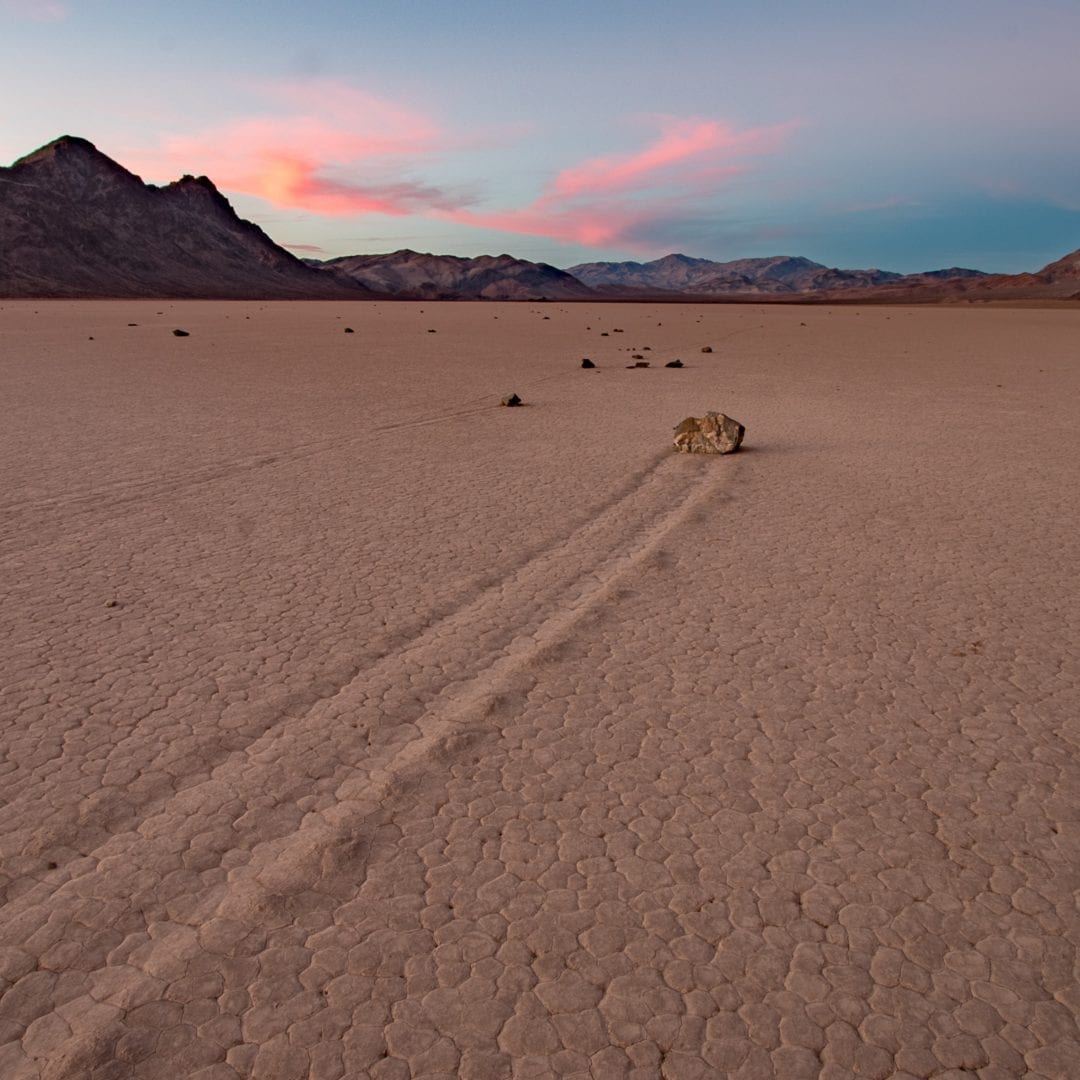
The Racetrack Playa Mystery
As hinted earlier, this playa is home to one of Death Valley’s oldest mysteries; the Moving Rocks. Scattered across the bottom of the lakebed are hundreds of rocks that leave trails on the ground like a slug… when they move.
And we’re talking 700-pound rocks in some cases, and they’ve moved over 1,500 feet. Since the pioneers first found these wonders, the source of their movement had gone unsolved until 2014.
Scientists studying the valley discovered that when the playa floods and cold winter nights freeze the water into a thin layer of ice, these ice sheets break into floating panels.
As night gives way to day, heavy winds drive the rocks forward across the slippery surface, leaving trails in the mud. It’s a super cool place to visit and take some pictures of these natural wonders!
Dante’s View
Dante’s View is a great place to view sweeping views of the Death Valley from the highest point in the park at 5,475 ft. It is best to go here at sunrise or sunset for amazing views of the park valley, surrounding mountains and breathtaking sky palette.
The best part is, if you wake up early and make it here for sunrise, most likely you will have the whole view to yourself! We had to wake up at 4.30 am and make our way here from our campground just in time for an amazing sunrise!
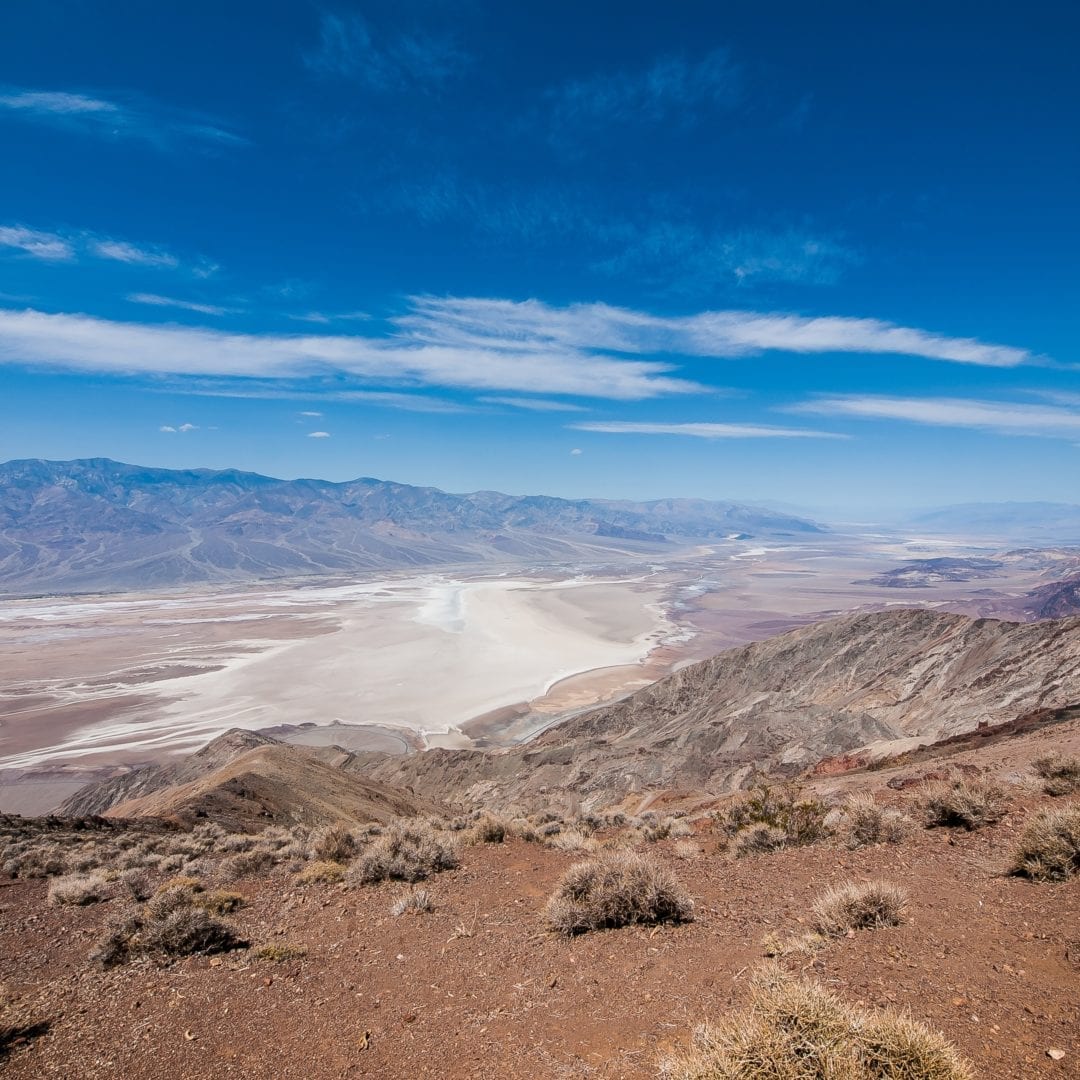
Mesquite Flats Sand Dunes
If you ever wanted to experience desert sand dunes, you don’t have to travel to African Sahara, you can do that in Death Valley!
At sunset or sunrise the temperature during summer is perfect and the sun casts beautiful shadows with hues of yellow and orange. Hike a bit further out to reach the sand dunes that are untouched and have no footsteps, it is totally worth it!
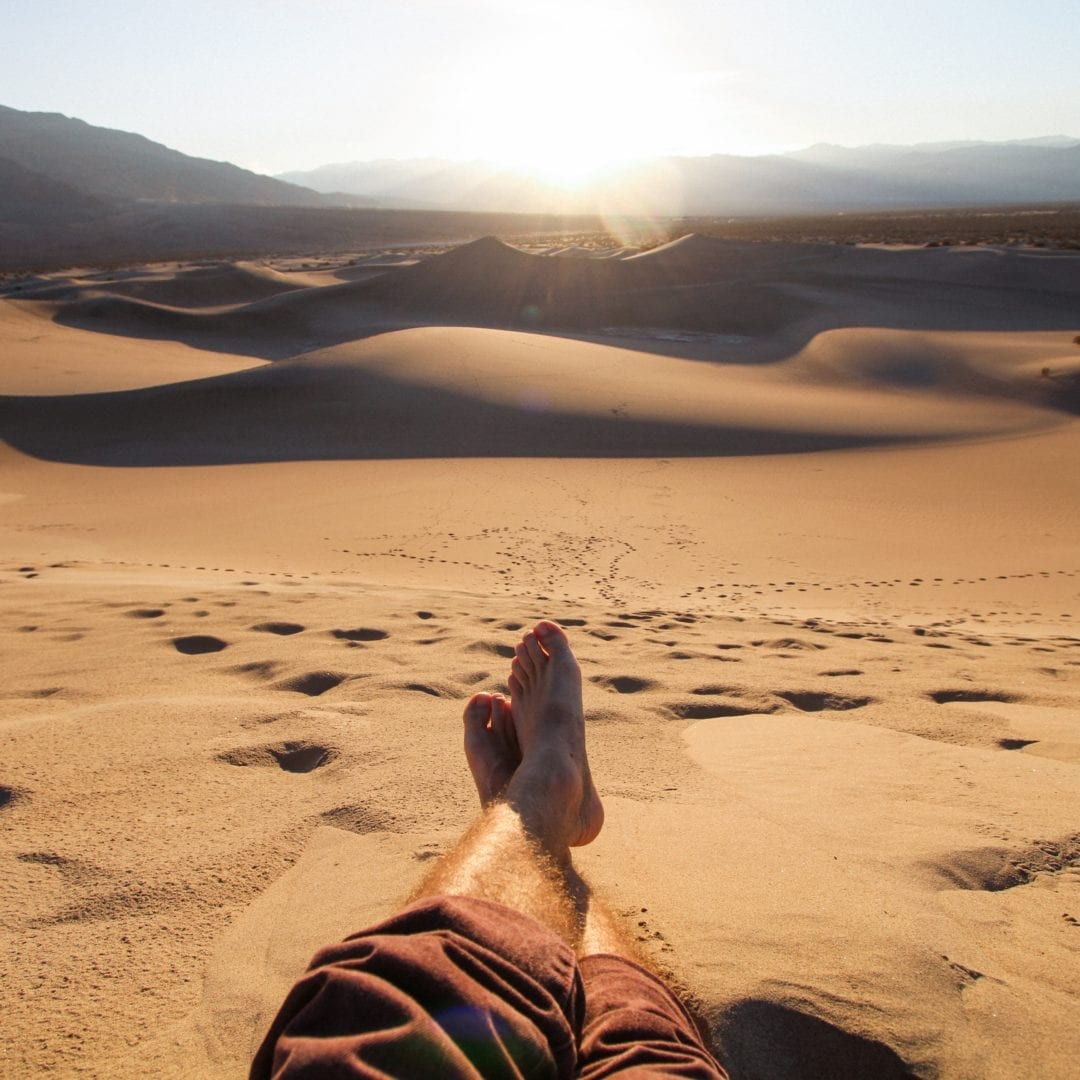
Devil’s Golf Course
Devil’s Golf Course is on the way to Badwater Basin, a short detour over a mile or so on dirt road. It’s 250 ft below sea level, and when we got here in the middle of summer, it was about 117 degrees!
It has unique crystallized salt formations due to the extreme heat and dry conditions. These salt formations stretch for miles on each direction, and it looks much like a martian landscape.
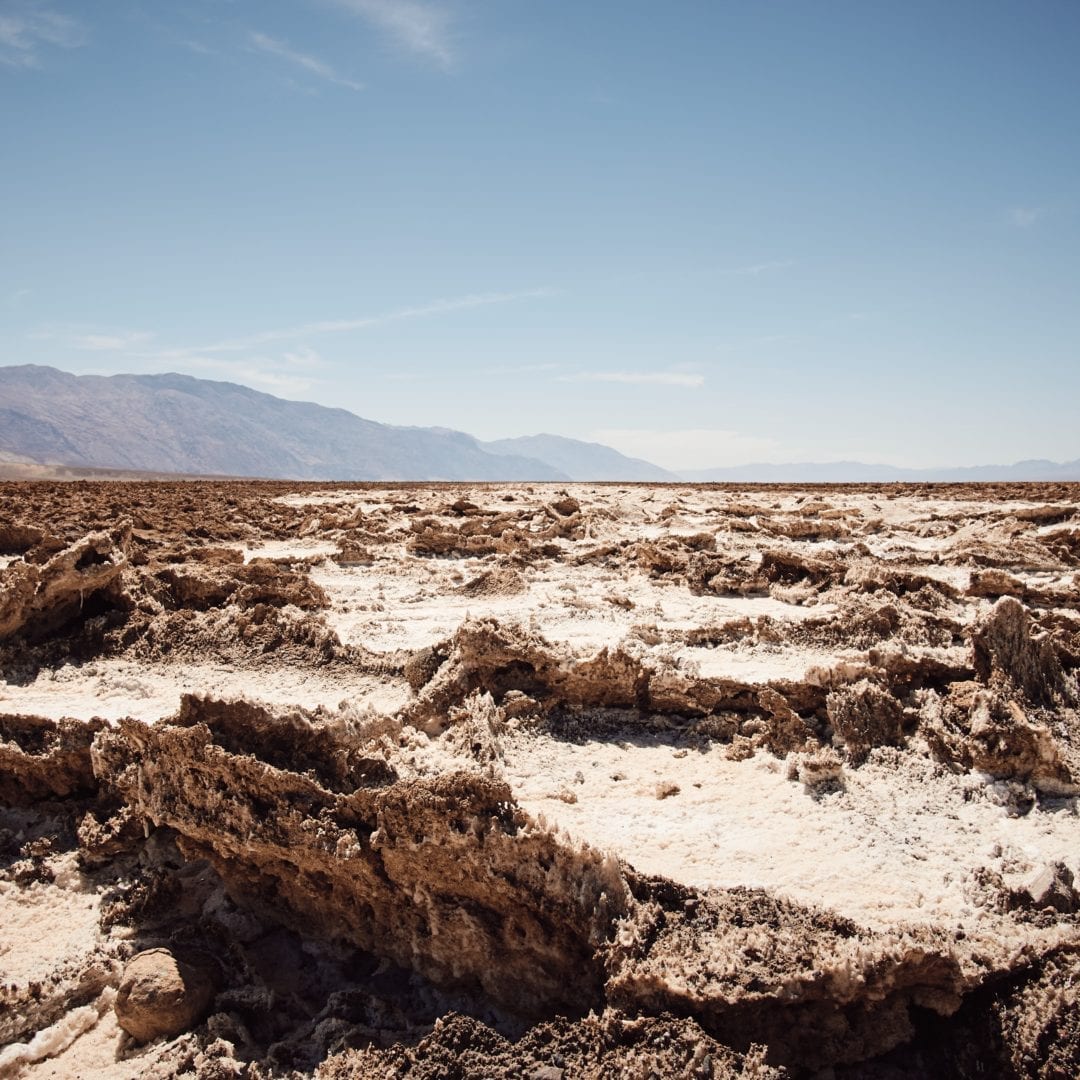
Artists Drive
On the way back from Badwater Basin, we did the one way drive into beautiful multicolored mountains, known as the Artist’s Palette (On Artists Drive).
The scenery is as rugged as it gets and the mountains have amazing rainbow colors you do not want to miss. The drive is one way only, so recommend doing it on your way back from Badwater Basin to Furnace Creek.
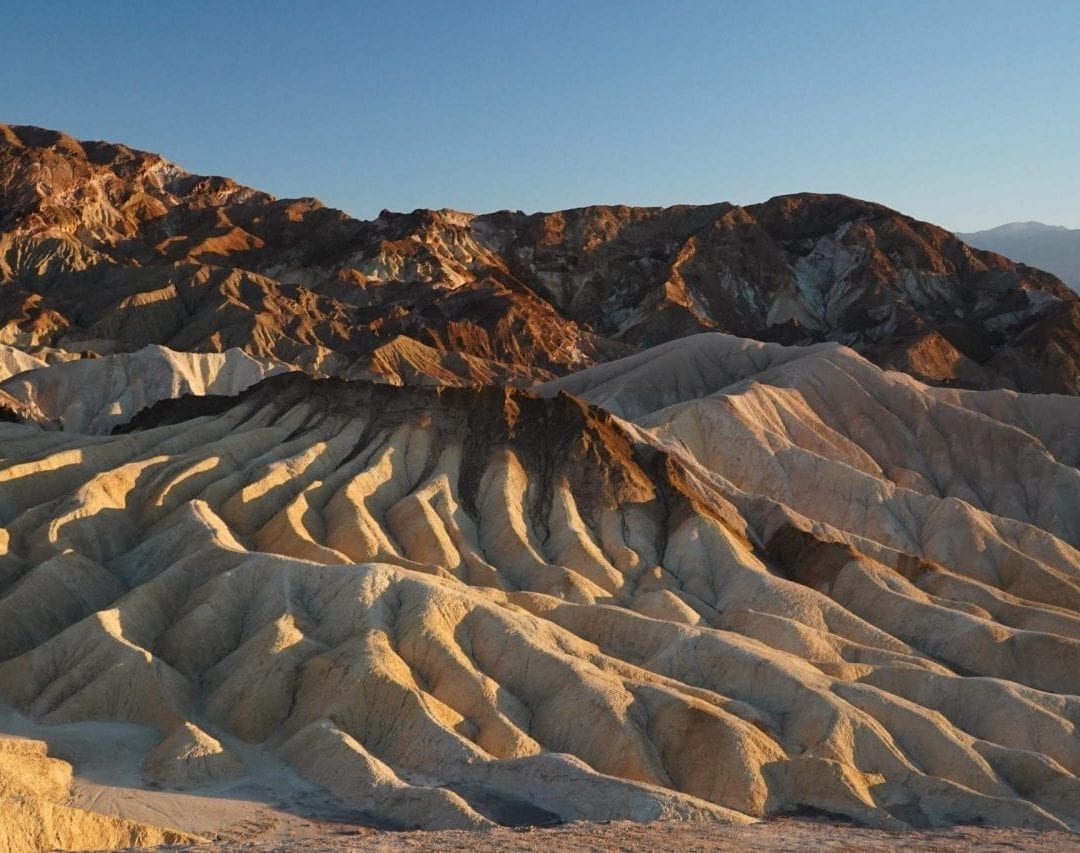
Badwater Basin
At 262 ft below sea level, Badwater Basin in Death Valley National Park is the lowest point on earth.
It is so incredibly hot (can reach 120 degrees Fahrenheit in summer), and so dry that you can barely spend a few minutes outside here without feeling the need to rush back into the comfort of your car.
In the summer, you can get dehydrated very quickly here. It’s not a coincidence how the park got its name.
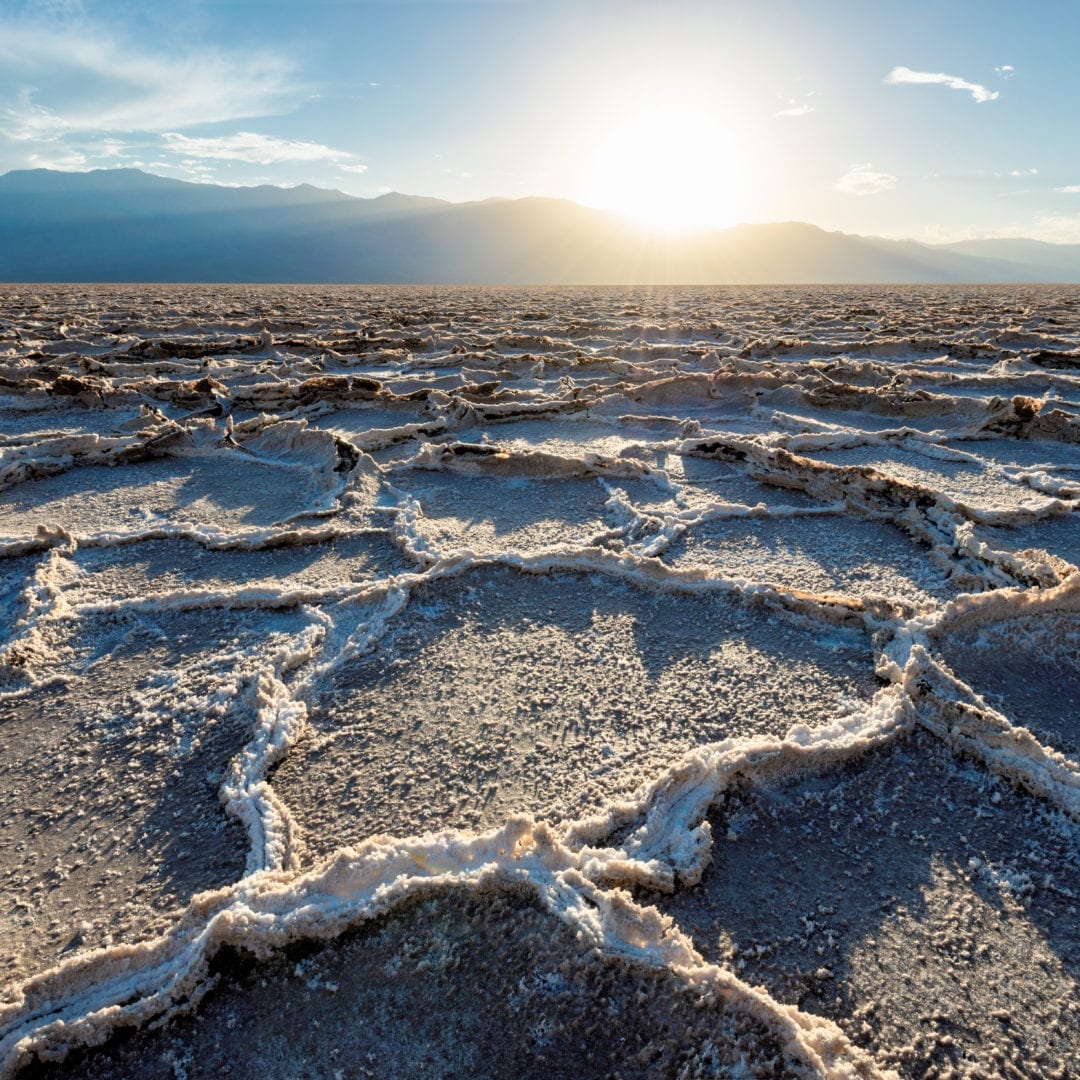
The Rainbow Canyon
If you are a Star Wars Nerd, or if you just love natural beauty, the Rainbow Canyon needs to be your first stop.
This craggy landscape of dark lava-flows and volcanic cinders transforms into the chasm of Rainbow Canyon below Father Crowley Vista Point.
With breathtaking sights like Panamint Valley, this is an excellent sunset spot to snap some photos of the multicolored rainbow rocks that made the backdrop for Tatooine in “A New Hope” as well as the filming location for many other epics, including Spartacus.
If you plan your trip at the right time of day, you may catch a unique site if you don’t blink. But don’t worry, even if you do you’ll definitely hear the low-flying F-35 fighter jets practicing their maneuvers in the valley, sometimes flowing as low as 200 feet above the ground!
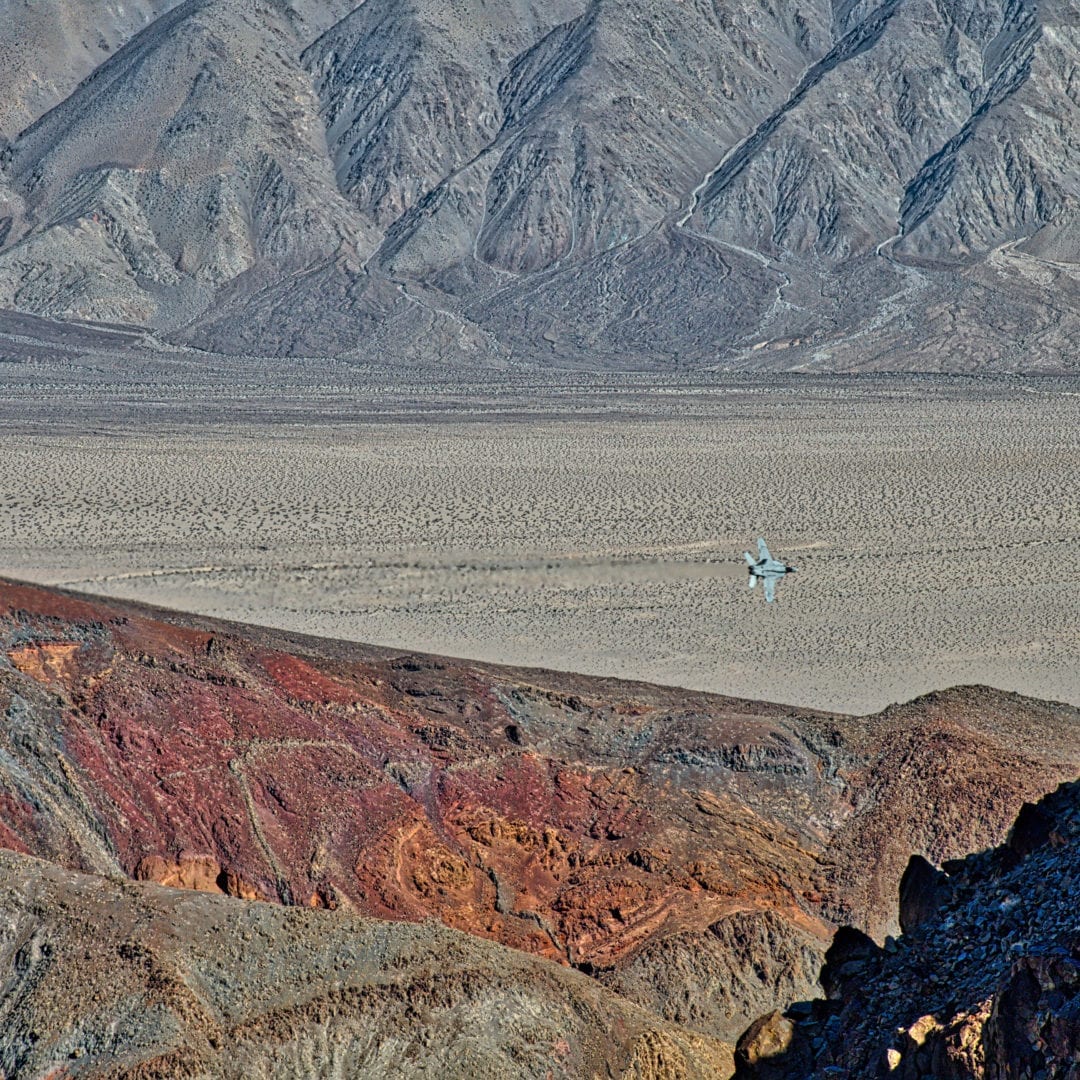
The Charcoal Kilns of Emigrant Valley
Yep, that’s how it’s actually spelled. Emigrant Valley is home to the giant stone beehives early settlers built to make their charcoal.
Standing around twenty five feet tall, these kilns were built by miners in 1877 to supply the nearby mines. They are the best known surviving examples of such kilns to be found in the western US.
If you take a drive up the Emigrant Canyon Road, you’ll get a stunning view of the kilns from above as well as an abundance of wildlife as you reach the outlook, which is 5,000 ft up.
Road to Death Valley
As we were driving into Death Valley National Park, we hit miles and miles of flat and dry valley surrounded by rugged mountains. It looked like an alien landscape even though there was plenty of vegetation in the valley that amazingly survives the 100+ degree heat and less than 2 inches of rainfall every year.
This is what makes Death Valley the hottest, driest and also the lowest point in earth with several spots being several hundred feet below sea level. Although we were running late for our destination for the day, we just had to stop by to admire the beauty of the landscape seen no where else on the planet. It was perfect a spot to shoot this drone video.
The winds were so strong the drone was barely able to hover in one spot. I was flying it about 100m high and at those heights the winds are even more stronger. After just a few seconds of flight heading north, I noticed it had already drifted 400m away due to strong tailwinds in that direction.
It took next several minutes for the drone to fight the strong winds and inch its way back to where we were. All the while the battery on the drone was approaching 0%. Luckily, I didn’t lose the drone but it was very close!
Are You Ready for Death Valley?
Death Valley has so many other things to offer, we’ve barely scratched the surface. There’s so much to do in this three million acre park; make sure you set aside plenty of time to see all you can when you drive through the valley. Just be sure to bring water. Lots and lots of water!
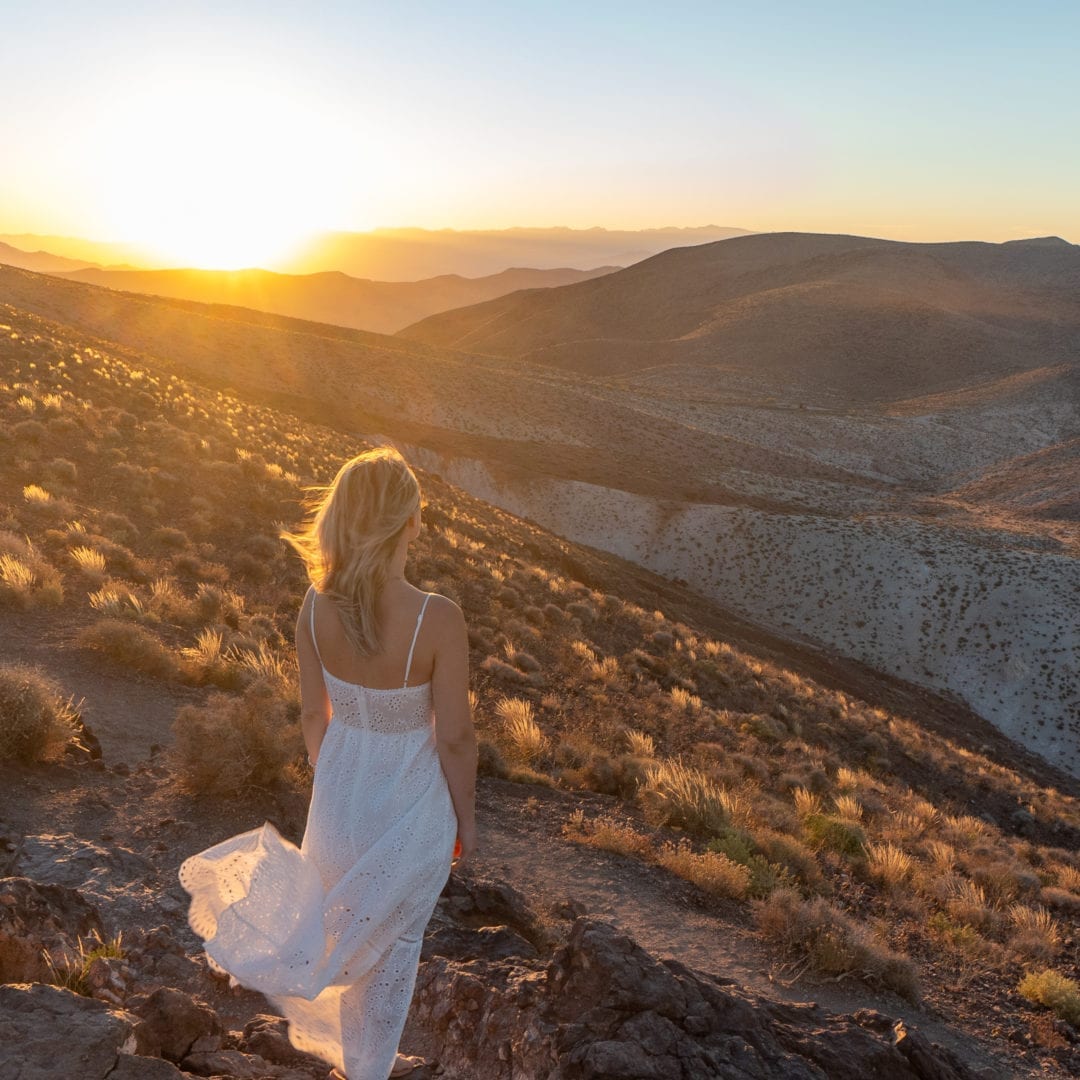
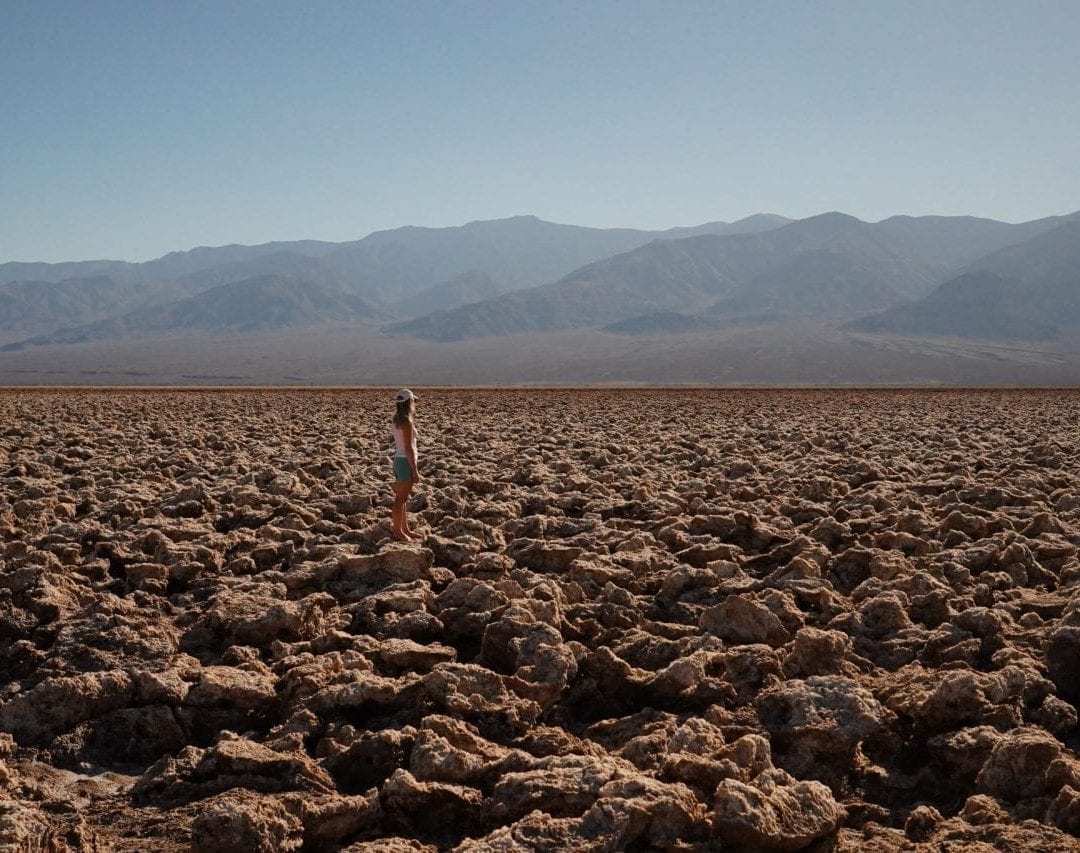
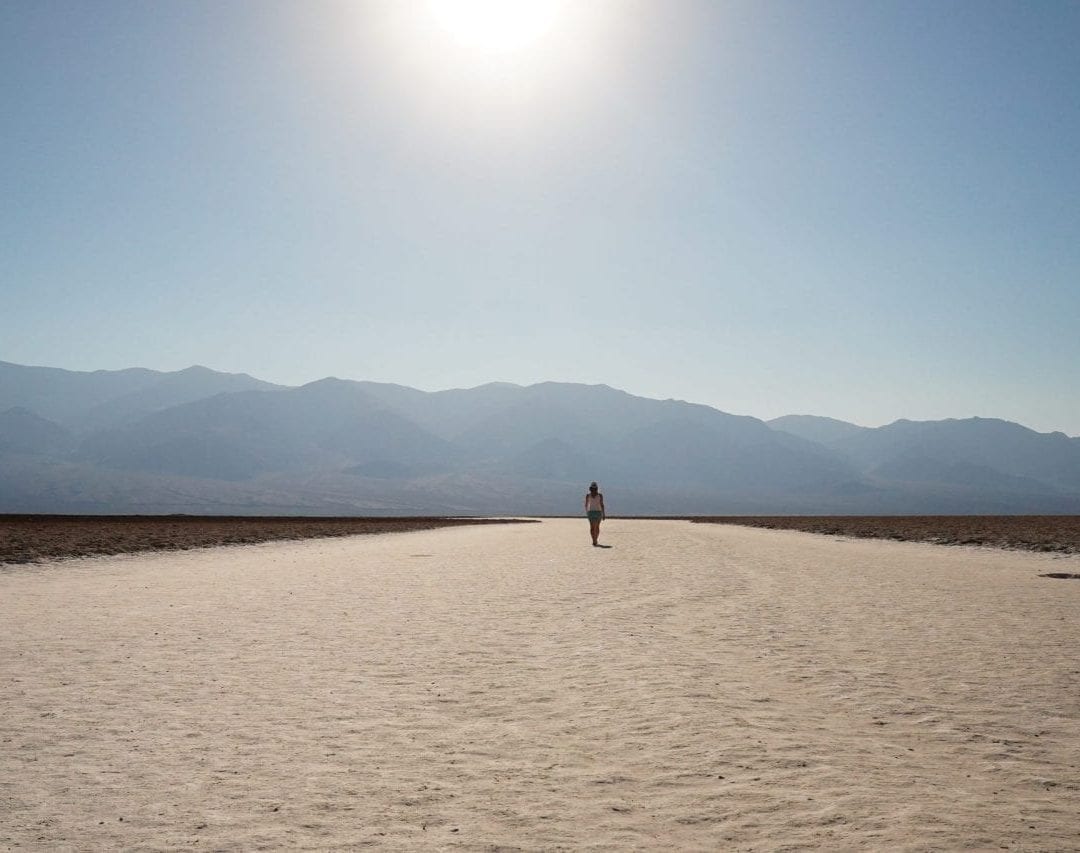
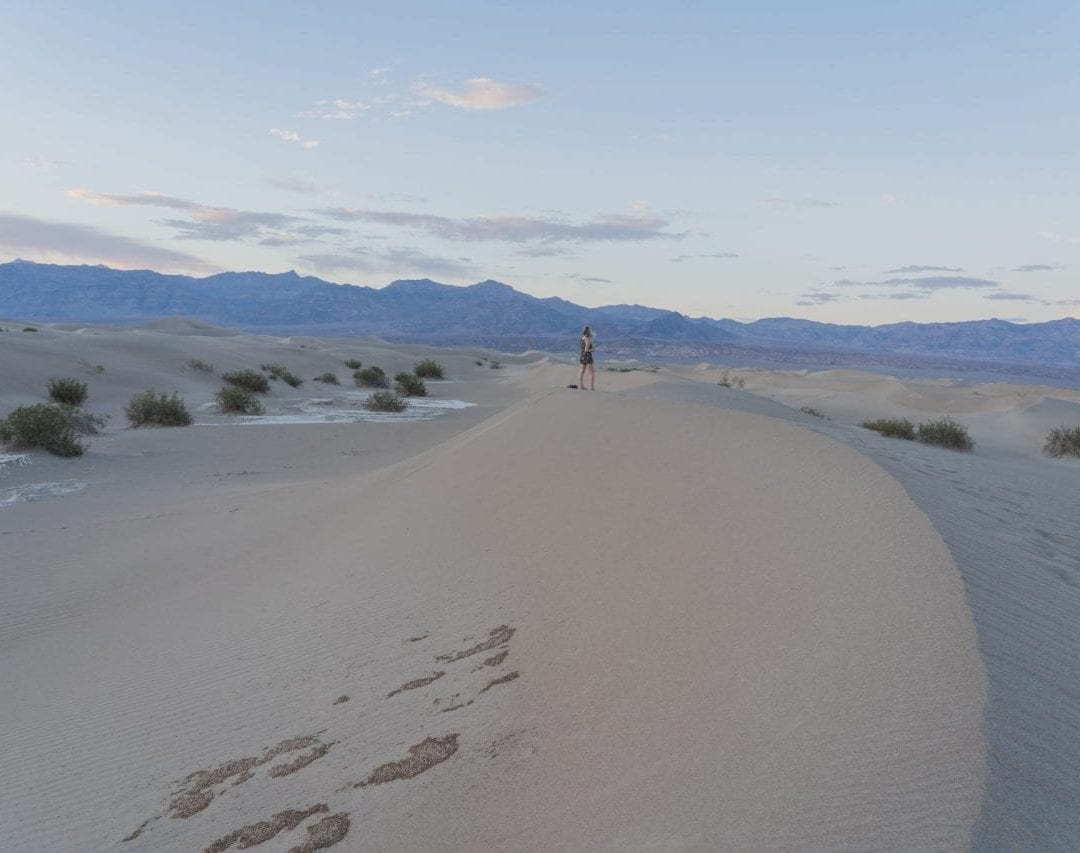
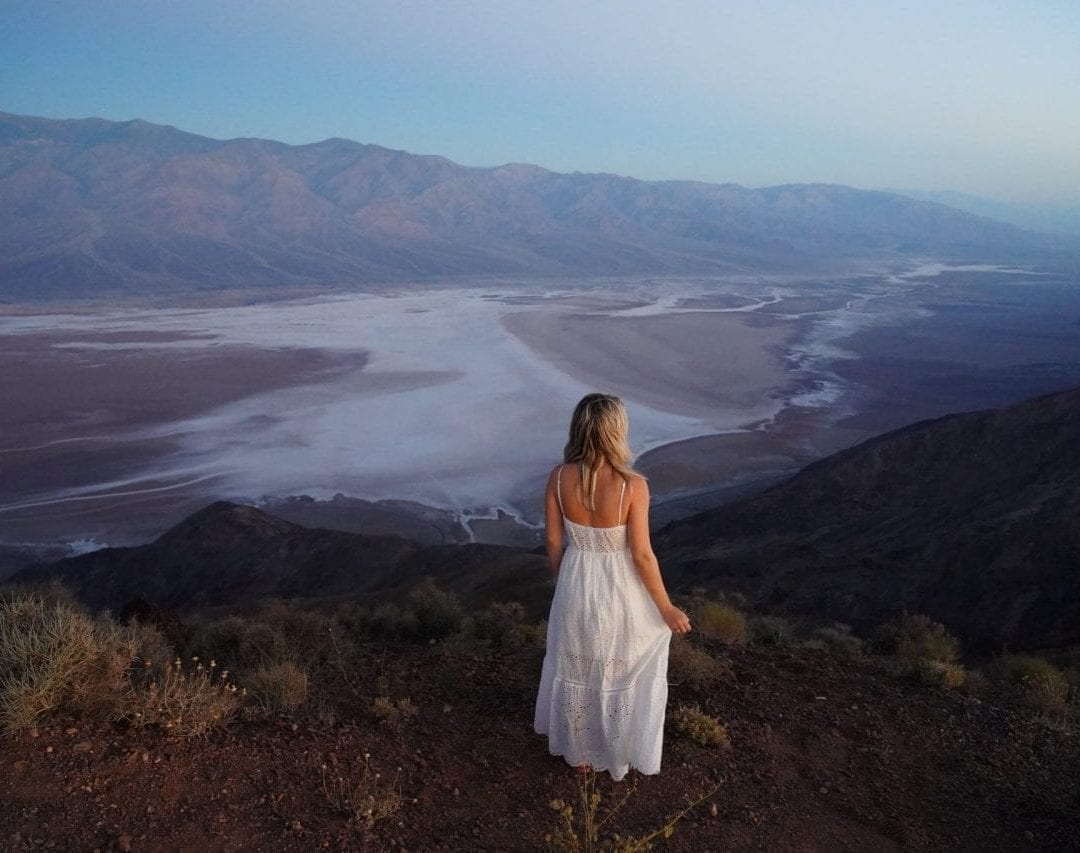
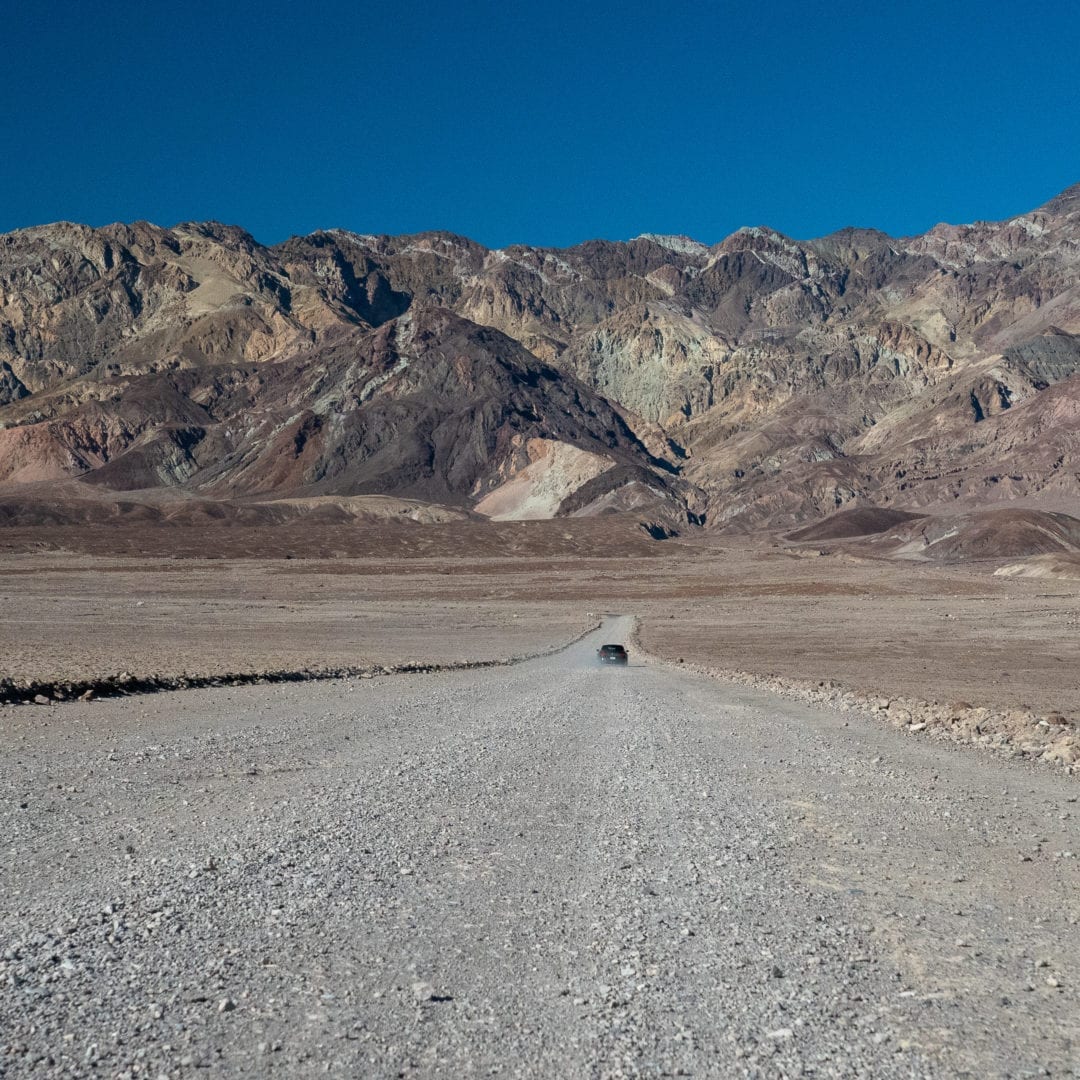
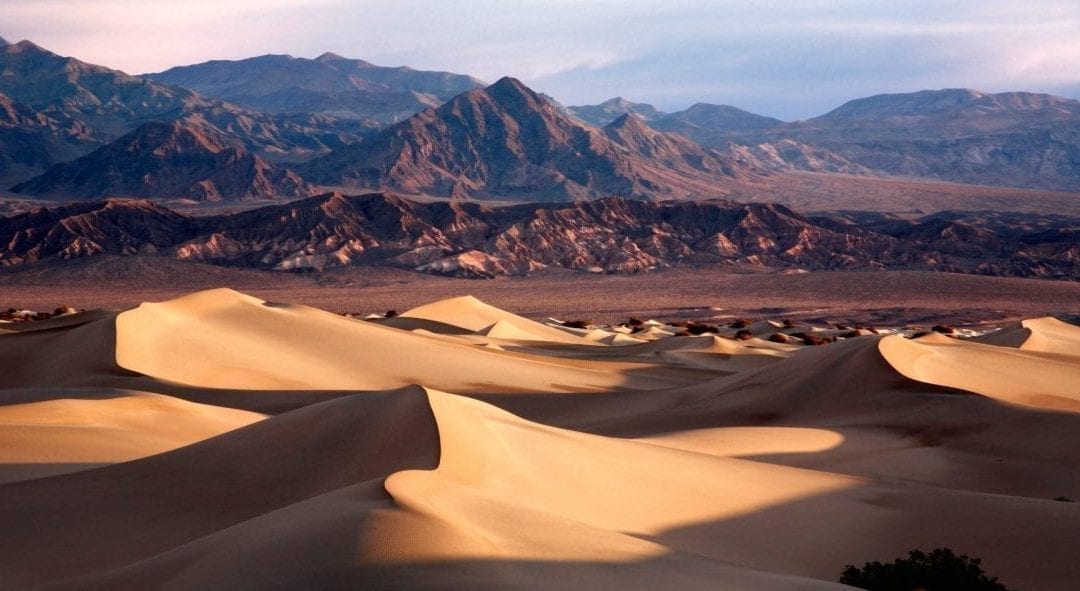
My spouse and I absolutely love your blog and find a lot of your post’s to be just what I’m looking for. Does one offer guest writers to write content available for you? I wouldn’t mind writing a post or elaborating on a lot of the subjects you write about here. Again, awesome site!